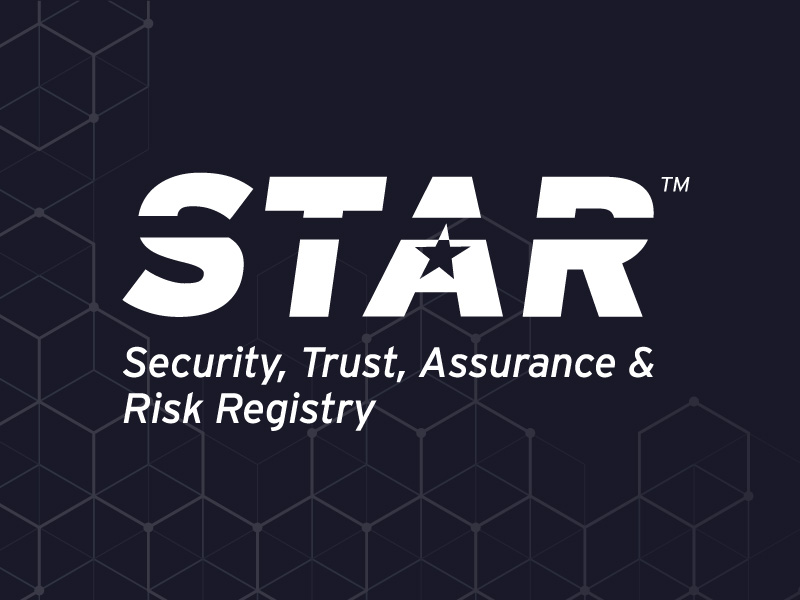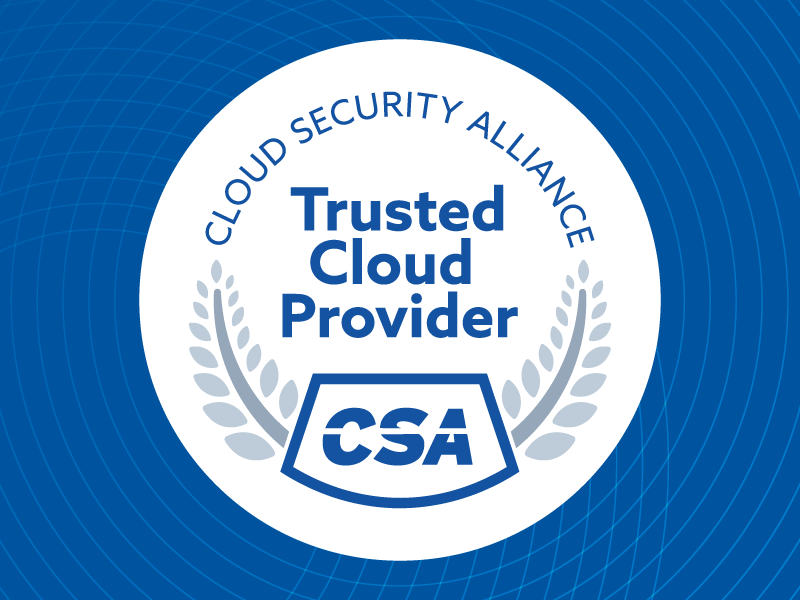Your complete SaaS security guide—with best practices for ensuring it
Published 03/05/2025
Originally published by Vanta.
SaaS security requires constantly monitoring and preparing to mitigate the latest industry threats and vulnerabilities. According to the 2024 State of SaaS Security Report, 58% of organizations experienced a SaaS security incident in the past year despite having high confidence levels in their existing security programs.
Today, SaaS applications are among the most common targets of cyberattacks, which is why they require an elaborate, multifaceted approach to security. In this guide, you’ll learn how to develop the right approach to SaaS security and better protect your systems, data, and other IT assets.
Here’s what you’ll learn about in the following sections:
- Meaning and components of SaaS security
- Key challenges in SaaS security
- Five best practices to follow
What is SaaS security?
SaaS security is an umbrella term encompassing numerous strategies, practices, tools, and technologies designed to protect a SaaS application from malicious attacks and unauthorized users. It focuses on external attacks and vulnerabilities, as well as involves measures and procedures that protect a SaaS solution from internal threats.
5 main components of SaaS security
Here are five key components SaaS security is built around:
- Identity and access management: Unauthorized access to systems is a common cause of cyberattacks, most notably account takeovers. That’s why strict access management policies are key to strong SaaS security.
- Data security: Data stored on servers and traveling between them should be safeguarded by robust encryption to reduce the risk of data theft, tampering, and eavesdropping.
- Threat detection and incident response planning: Ongoing threat monitoring enables quick responses to potential incidents. Ideally, your organization should also have a detailed incident response plan in place so that incidents are responded in a timely and appropriate manner.
- Perimeter defense: You must defend the boundaries of a SaaS solution with the help of perimeter defense technologies like firewalls that filter out potentially malicious traffic.
- Network access control: This aspect of SaaS security requires authenticating users (or their devices) based on predefined rules. The goal is to limit exposure to unauthorized traffic.
You’ll ideally implement these measures alongside other SaaS controls to minimize the risk of cyber threats. However, the process may not always be smooth.
Common SaaS security challenges
The process of securing your SaaS solutions can often get complicated due to the following factors:
- The expanding scope of risk and threat management: Cybersecurity and risk professionals today need to address an ever-growing array of threats. Cyberattacks have become more potent over the last few years, and the damage they inflict can be extensive if your SaaS applications are connected to other tools within your system.
- Increased attack surface: Interconnected SaaS applications are among the most common risk drivers because they increase your organization’s attack surface. It can be challenging to ensure that all integrated platforms meet your security standards.
- Staff shortages: 2022 research by ISACA shows that 63% of companies have vacant cybersecurity positions, which indicates that most organizations could use more people to monitor SaaS risks.
- Limited tech stack visibility: Organizations may not be aware of their entire tech stack, especially if their employees introduce shadow IT, i.e., new SaaS tools to the system without approval. Vulnerabilities due to such shadow IT can be difficult to manage because the cybersecurity teams may not be aware of them.
- Rapid changes in compliance demands: SaaS compliance standards and regulations evolve constantly to account for more advanced threats and recommend new controls. Ensuring such compliance can be highly resource-intensive, especially without a way to automate the process.
5 SaaS security best practices to follow
While each organization will have a unique approach to ensuring SaaS security, here are five standard best practices everyone can follow:
- Uncover and inventory your assets
- Monitor user access and data sharing
- Prioritize code security
- Safeguard your integrations
- Implement SaaS security posture management (SSPM)
We’ll explain each of these practices in the sections below and give you a concise overview of specific actions you can take.
1. Uncover and inventory your assets
One of the first tasks you should address before implementing any SaaS security measures is creating an inventory of all IT assets. This is a great opportunity to factor in any shadow IT in your network. The goal is to understand your entire attack surface and threat landscape, which informs the security controls and policies you’ll put into place.
You can uncover shadow IT by encouraging employees to communicate openly about the use of unapproved IT assets. A more direct and effective way would be to monitor your cloud environment and flag unauthorized entries.
Once all assets are known, list and inventory all your assets. Assess the risk profile of each SaaS tool based on factors like integration access and business criticality. It’s a good idea to add the relevant risk data to your inventory so that you can develop your security strategy according to vendor tiers, such as critical or high-risk.
This process might involve quite some time and effort, especially if you have a large tech stack and numerous IT assets. That’s why efficient organizations today are opting for SaaS security solutions that enable automated discovery and inventory classification of IT tools.
2. Monitor user access and data sharing
Your access management policies and procedures can make a huge difference in the quality of your SaaS security. The action you need to take is simple—define who can access data based on different sensitivity levels. This can include a broad spectrum of users, including:
- Your team
- Vendors and other third parties
- Customers
You should consult with your IT team to set up base-level user access measures like multifactor authentication and role-based access control (RBAC). You also need to ensure granular monitoring of access control updates when there’s a change in your SaaS environment, such as the onboarding or offboarding of a tool. You’ll most likely need dedicated software here to facilitate real-time monitoring processes.
Another best practice is to train and educate employees on protecting their devices and accounts from unauthorized access, as well as ensure secure data sharing. For instance, you can outline an internal policy to recommend how sensitive data can be transferred with maximum security.
3. Prioritize code security
Code security contributes to the long-term resilience of your software. By staying mindful of related security concerns, you can prevent numerous attempts to exploit code vulnerabilities.
During your software development lifecycle (SDLC), make sure that every stage is designed with security as the top priority. Here are some tips you can follow:
- Build a culture of security awareness among your developers
- Use code-scanning tools to proactively detect security flaws
- Rely on trusted sources for cryptography
- Perform a gap analysis to assess the application’s integrity
Pre-production security analysis is particularly important—simulating the conditions of your production environment lets you identify vulnerabilities in your deployment and remediate them promptly.
4. Safeguard your integrations
Your software is as secure as its least safe integration. As mentioned earlier in the guide, each platform you integrate with expands your attack surface. SaaS security hinges on each platform's implementation of the necessary security measures and practices.
You should monitor and update integrations regularly to ensure your entire application network has robust security. If you need to improve the security of your integrations, you can take the following steps:
- Use strong authentication to prevent brute force attacks and account takeover attempts
- Safeguard credentials from unauthorized access
- Log and track all activity to quickly identify the source of unauthorized actions
- Regularly audit and update your safety protocols
5. Implement SaaS security posture management (SSPM)
The goal of the SSPM practice is to give you a real-time overview of the effectiveness of your security measures and controls. It consists of three components:
- Configuration assessment: Helps ensure that your security configurations follow the best practices prescribed by applicable security and compliance standards
- Remediation and response: Requires SaaS risk assessments that allow you to develop adequate remediation and response plans to security risks
- Continuous monitoring: Ensures ongoing oversight of controls, mapped user access configurations, and integrations to spot threats proactively in a SaaS environment
SSPM implementation works best when it’s supported by automation-enabled software. The right platform should act as a centralized hub for security posture monitoring. It should also automate tasks like security questionnaires and vulnerability scanning.
Some benefits of implementing SSPM include:
- Streamlined governance and compliance with necessary regulations
- Comprehensive access control management
- Informed security policy development and management
Unlock Cloud Security Insights
Subscribe to our newsletter for the latest expert trends and updates
Related Articles:
The Internet is a Single Point of Failure
Published: 11/21/2025
Implementing CCM: Threat & Vulnerability Management Controls
Published: 11/21/2025
SSCF v1.0: The Standard That Simplifies SaaS Security
Published: 11/19/2025






.jpeg)

.jpeg)
.jpeg)